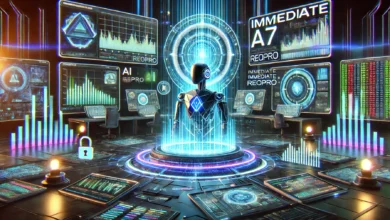Boost Your Streaming Development with the Wowza Gradle Plugin

Introduction to Wowza and Gradle: A Perfect Pair for Streaming Development
Wowza is a popular streaming server solution trusted by developers and businesses worldwide. It’s designed for streaming high-quality, real-time audio, video, and data over IP networks. If you’ve worked with Wowza before, you probably already appreciate its robust API, real-time video streaming features, and the customization potential it offers. But, as with any development process, streamlining and optimizing your workflow is essential for efficient project delivery.
That’s where Gradle comes into the picture. Gradle is a flexible, fast, and highly scalable build automation tool, making it a go-to choice for Java developers. When combined with Wowza, Gradle can simplify the build and deployment processes, letting developers focus more on the core functionalities of their streaming applications.
Enter the Wowza Gradle Plugin – a tool designed to merge the power of Wowza with Gradle’s efficiency. This plugin allows developers to automate various tasks in the Wowza workflow, speeding up development and reducing the chances of manual errors. In this article, we’ll dive deep into the Wowza Gradle Plugin, exploring its features, benefits, and best practices to help you get the most out of it.
Why Use the Wowza Gradle Plugin?
Using the Wowza Gradle Plugin can be a game-changer for developers working in the streaming space. It simplifies repetitive tasks, improves project organization, and ensures smoother deployments. But why exactly should you integrate this plugin into your development environment?
Firstly, the plugin automates many repetitive tasks you’d typically encounter when working with Wowza. Think about all the times you’ve had to copy files manually, configure settings, and handle dependencies. With the Wowza Gradle Plugin, you can automate these tasks with simple Gradle scripts, which saves you time and minimizes human error.
Secondly, the Wowza Gradle Plugin allows you to maintain a cleaner, more organized project structure. Gradle’s build files are known for being concise and declarative, and this plugin leverages that structure to keep Wowza-specific configurations neat and manageable. Instead of spreading configuration settings across multiple files and folders, the plugin allows you to centralize everything within your Gradle build file, making locating and modifying settings easier.
Lastly, the plugin ensures a more streamlined deployment process. In a typical Wowza setup, deploying new changes can be cumbersome, involving multiple steps to get the latest configuration or code live on the server. With the Wowza Gradle Plugin, you can automate deployments as part of your build process, which ensures that your latest changes are always deployed consistently without manual intervention.
Setting Up the Wowza Gradle Plugin: A Step-by-Step Guide
Now that you know why the Wowza Gradle Plugin is worth considering, let’s consider how to set it up. Fortunately, getting started with the plugin is straightforward, especially if you’re already familiar with Gradle.
- Install Gradle: Before using the Wowza Gradle Plugin, you must install Gradle on your machine. You can download and install Gradle from its official website, which provides detailed instructions for different operating systems.
- Add the Plugin to Your Build File: Once Gradle is set up, you must add the Wowza Gradle Plugin. Gradle file. This typically involves adding a plugin section or including the plugin in your repositories. Check the Wowza documentation for the exact version and syntax, which may vary depending on your Gradle version.
- Configure Plugin Settings: After adding the plugin, it’s time to configure its settings to match your Wowza project requirements. This may involve setting paths to your Wowza installation, defining server properties, or specifying custom tasks. The Wowza Gradle Plugin documentation provides plenty of options for configuring these settings, so be sure to explore the available parameters to tailor the setup to your needs.
Following these steps will allow you to use the Wowza Gradle Plugin quickly. While the setup may seem technical initially, it’s pretty simple once you get the hang of it. The time saved during development and deployment will quickly compensate for any initial setup effort.
Key Features of the Wowza Gradle Plugin
The Wowza Gradle Plugin offers a range of features that can significantly enhance your streaming development experience. These features are designed to optimize your workflow and give you greater control over the Wowza server.
- Automated File Management: One of the standout features of the Wowza Gradle Plugin is its ability to handle file management tasks automatically. This includes copying configuration files, libraries, and modules to the appropriate directories in your Wowza installation. Instead of manually moving files each time you make changes, the plugin takes care of it for you, ensuring consistency across environments.
- Custom Task Creation: With the Wowza Gradle Plugin, you can create custom tasks to suit your project’s needs. For example, you could make a task to restart the Wowza server automatically after deploying new changes or set up tasks to generate logs and reports. This flexibility allows you to build a highly customized development pipeline that aligns perfectly with your workflow.
- Dependency Management: Managing dependencies in any Java project can be challenging, especially in complex streaming applications. The Wowza Gradle Plugin simplifies this by allowing you to declare dependencies within your Gradle build file. This makes your dependencies easy to track and ensures they’re automatically included whenever you build or deploy your project.
These features highlight the plugin’s potential to streamline your Wowza development. By automating tasks that would otherwise require manual effort, the plugin allows you to focus on the creative aspects of streaming development, like crafting engaging content or building interactive features for viewers.
Tips for Optimizing Your Wowza Gradle Plugin Workflow
While the Wowza Gradle Plugin is powerful on its own, there are some additional steps you can take to make the most out of it. Here are a few tips to optimize your workflow and enhance your development experience.
- Use Continuous Integration (CI): Integrating the Wowza Gradle Plugin with a CI platform, such as Jenkins or GitHub Actions, can help you automate builds and deployments across your team. This ensures that every commit is tested and deployed consistently, reducing the risk of errors and helping your team collaborate more effectively.
- Leverage Gradle Caching: Gradle’s caching feature can save time by reusing previous builds’ outputs. When working on large streaming applications, build times can add up quickly. By enabling Gradle caching, you can avoid redundant builds and speed up your development cycle, especially during iterative testing.
- Modularize Your Project: If your Wowza application includes multiple modules (e.g., authentication, analytics, and streaming), consider breaking them into separate Gradle subprojects. This can make it easier to manage each module and reuse code between projects. Modularization also allows you to compile only the changed components, further improving build times.
These tips may seem minor, but combined, they can make a substantial difference in your productivity. By integrating CI, enabling caching, and modularizing your project, you can build a highly efficient Wowza development environment ready to tackle even the most complex streaming requirements.
Common Issues and Troubleshooting with the Wowza Gradle Plugin
Like any tool, the Wowza Gradle Plugin can sometimes encounter issues. Here are some common problems developers face and tips for troubleshooting them.
- Plugin Compatibility Issues: If you’re using an older or newer version of Gradle, you may encounter compatibility issues. As outlined in the plugin’s documentation, make sure you’re using a Gradle version that’s supported by the Wowza plugin.
- Environment Variables Not Set: Some plugin tasks may require specific environment variables, like paths to your Wowza server or JDK. If these are set correctly, you may avoid errors. Double-check your environment variables to ensure they’re pointing to the correct directories.
- Slow Build Times: If your builds take longer than expected, you can optimize them by adjusting Gradle’s memory settings or using a local caching mechanism. Gradle also allows you to view a build scan, which can help you identify bottlenecks in your build process.
By following these troubleshooting tips, you can quickly resolve any issues that arise and keep your development process running smoothly.
Conclusion: Supercharging Wowza Development with Gradle
The Wowza Gradle Plugin is valuable for any developer working with Wowza streaming servers. It simplifies repetitive tasks, streamlines project organization and ensures smoother deployments, leading to more efficient and error-free development. By automating file management, managing dependencies, and allowing custom tasks, the plugin enhances Gradle’s capabilities within the Wowza ecosystem.
With the proper setup and best practices, the Wowza Gradle Plugin can significantly improve your development workflow, allowing you to spend less time on build and deployment tasks and more time creating great streaming experiences for your users. So, whether you’re a seasoned Wowza developer or just getting started, try the Wowza Gradle Plugin – it just might become an essential part of your toolkit!



